 W
WArchery, or the use of bow and arrows, was developed by the end of the Upper Paleolithic or earlier. Archery has been an important military and hunting skill for over 10,000 years and figures prominently in the mythologies of many cultures. Archers, whether on foot, in chariots or mounted on horses were a major part of most military forces until they began being gradually supplemented, then replaced, by firearms in the Late Middle Ages and in the early modern period. Gunpowder, which was first developed in China in the 9th century AD, was initially used to enhance projectile weapons including arrows. Firearms diffused throughout Eurasia by the gunpowder empires, gradually reducing the importance of archery in warfare.
 W
WThe Battle of Agincourt was an English victory in the Hundred Years' War. It took place on 25 October 1415 near Azincourt, in northern France. The unexpected English victory against the numerically superior French army boosted English morale and prestige, crippled France and started a new period of English dominance in the war.
 W
WThe Pítati (pí-ta-ti) were a contingent of archers of ancient Egypt that were often requested and dispatched to support Egyptian vassals in Canaan. They are recorded in the correspondence of the 1350 BC Amarna letters, and were often requested to defend against the Habiru, also rogue vassal-kings and foreign troops of neighboring kingdoms, who were on the attack.
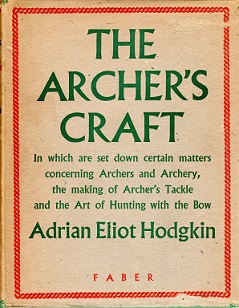 W
WThe Archer's Craft by A. E. Hodgkin is a book on the making and use of traditional English and Welsh bows. The book describes how to make both longbows and short hunting bows and arrows. It also describes hunting with the bow and on its history and place in English culture of the yeoman class and royal mandates. It draws inspiration and often quotes from the 16th century Toxophilus written by Roger Ascham.
 W
WThe Battle of Crécy took place on 26 August 1346 in northern France between a French army commanded by King Philip VI and an English army led by King Edward III. The French attacked the English while they were traversing northern France during the Hundred Years' War resulting in an English victory and heavy loss of life among the French.
 W
WThe English longbow was a powerful medieval type of longbow about 6 ft (1.8 m) long used by the English and Welsh for hunting and as a weapon in warfare. English use of longbows was effective against the French during the Hundred Years' War, particularly at the start of the war in the battles of Sluys (1340), Crécy (1346), and Poitiers (1356), and perhaps most famously at the Battle of Agincourt (1415). However they were less successful after this, with longbowmen having their lines broken at the Battle of Verneuil (1424) though the English won a decisive victory, and being completely routed at the Battle of Patay (1429) when they were charged by the French mounted men-at-arms before they had prepared the terrain and finished defensive arrangements. The Battle of Pontvallain (1370) had also previously shown longbowmen were not particularly effective when not given the time to set up defensive positions.
 W
WA gorytos is a type of leather bow-case for a short composite bow used by the Scythians in classical antiquity. They are a combination of bow case and quiver in one, and are worn on the archer's left hip with the opening tilted rearward. Many gorytos were highly decorated, and at least one surviving specimen was determined via SEM examination to be made of human skin.
 W
WKasagake or Kasakake is a type of Japanese mounted archery. In contrast to yabusame, the types of targets are various and the archer shoots without stopping the horse. While yabusame has been played as a part of formal ceremonies, kasagake has developed as a game or practice of martial arts, focusing on technical elements of horse archery.
 W
WThe Mary Rose is a carrack-type warship of the English Tudor navy of King Henry VIII. She served for 33 years in several wars against France, Scotland, and Brittany. After being substantially rebuilt in 1536, she saw her last action on 19 July 1545. She led the attack on the galleys of a French invasion fleet, but sank in the Solent, the straits north of the Isle of Wight.
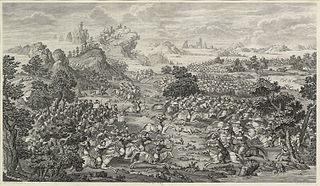 W
WThe Mongol bow is a type of recurved composite bow used in Mongolia. "Mongol bow" can refer to two types of bow. From the 17th century onward, most of the traditional bows in Mongolia were replaced with the similar Manchu bow which is primarily distinguished by larger siyahs and the presence of prominent string bridges.
 W
WA horse archer is a cavalryman armed with a bow and able to shoot while riding from horseback. Archery has occasionally been used from the backs of other riding animals. In large open areas, it was a highly successful technique for hunting, for protecting the herds, and for war. It was a defining characteristic of the Eurasian nomads during antiquity and the medieval period, as well as the Iranian peoples, and Indians in antiquity, and by the Hungarians, Mongols, Chinese, and the Turkic peoples during the Middle Ages. By the expansion of these peoples, the practice also spread to Eastern Europe, Mesopotamia, and East Asia. In East Asia, horse archery came to be particularly honored in the samurai tradition of Japan, where horse archery is called Yabusame.
 W
WSt Mary's Butts is a thoroughfare in the English town of Reading, Berkshire. On its west side is the Broad Street Mall. It is connected to the north with Broad Street, the pedestrianised primary high street of Reading. St Mary's Church and Butts are where the town of Reading originally grew from.
 W
WShooting an apple off one's child's head, also known as apple-shot is a feat of marksmanship with a bow that occurs as a motif in a number of legends in Germanic folklore. In the Stith Thompson Motif Index it is F661.3, described as "Skillful marksman shoots apple from man's head" or "apple shot from man's head", though it always occurs in the form of the marksman being ordered to shoot an apple off his own son's head. It is best known as William Tell's feat.
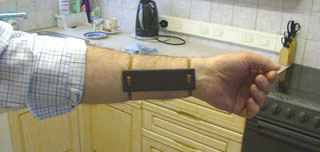 W
WEarly Bronze Age stone wrist-guards are found across Europe from around 2400-1900 BC and are closely associated with the Beaker culture and Unetice culture. In the past they have been variously known as stone bracers, stone arm-guards and armlets, although "stone wrist-guard" is currently the favoured terminology; and it's no longer thought that they were functional archer's bracers.
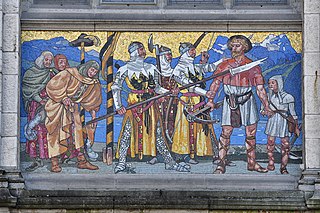 W
WWilliam Tell is a folk hero of Switzerland. According to the legend, Tell was an expert marksman with the crossbow who assassinated Albrecht Gessler, a tyrannical reeve of the Austrian dukes of the House of Habsburg positioned in Altdorf, in the canton of Uri. Tell's defiance and tyrannicide encouraged the population to open rebellion and a pact against the foreign rulers with neighbouring Schwyz and Unterwalden, marking the foundation of the Swiss Confederacy.
 W
WA thumb ring is a piece of equipment designed to protect the thumb during archery. This is a ring of leather, stone, horn, wood, bone, antler, ivory, metal, ceramics, plastic, or glass which fits over the end of the thumb, coming to rest at the outer edge of the outer joint. Typically a flat area extends from the ring to protect the pad of the thumb from the bowstring; this may be supplemented by a leather extension.
 W
WThe Tōshiya or the arrows which hit the target, was an archery exhibition contest held on the west veranda of Sanjūsangen-dō temple in Kyoto, Japan.
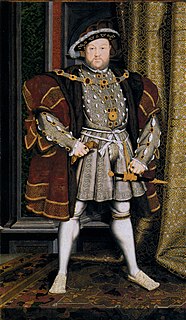 W
WToxophilus is a book about longbow archery by Roger Ascham, first published in London in 1545. Dedicated to King Henry VIII, it is the first book on archery written in English.
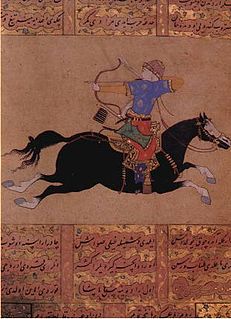 W
WTurkish archery is a tradition of archery which became highly developed in the Ottoman Empire, although its origins date back to the Eurasian Steppe in the second millennium BC.
 W
WThe Unlawful Games Act 1541, sometimes referred to as the Suppression of Unlawful Games Act 1541, was an Act of the Parliament of England, designed to prohibit "Several new devised Games" that caused "the Decay of Archery". All Men under the Age of sixty Years "shall have Bows and Arrows for shooting". Men-Children between Seven "Years and Seventeen shall have a Bow and 2 Shafts". Men about Seventeen "Years of Age shall keep a Bow and 4 Arrows". The penalty for nonobservance was set at 6s.8d.
 W
WThe Witchery of Archery, written by Maurice Thompson in 1878, was the first book in English about hunting with a bow ever published. Its full title is The Witchery of Archery: A Complete Manual of Archery. With Many Chapters of Adventures by Field and Flood, and an Appendix Containing Practical Directions for the Manufacture and Use of Archery Implements. It was the first important book about archery written in English since Toxophilus, which was written in 1545. It was said that Witchery "...has as much effect on archery as Uncle Tom's Cabin had on the Civil War.
 W
WYabusame (流鏑馬) is a type of mounted archery in traditional Japanese archery. An archer on a running horse shoots three special "turnip-headed" arrows successively at three wooden targets.
 W
WYeoman was first documented in mid-14th-century England, referring to the middle ranks of servants in an English royal or noble household. Yeomanry was the name applied to groups of freeborn commoners engaged as household guards, or raised as an army during times of war. The 14th century also witnessed the rise of the yeoman longbow archer during the Hundred Years' War, and the yeoman outlaws celebrated in the Robin Hood ballads. Yeomen also joined the English Navy during The Hundred Years' War as seamen and archers.